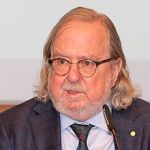
James P. Allison Ph.D.
The Nobel Prize in Physiology or Medicine 2018
Nobel co-recipient Tasuku Honjo
Cancer Immunologist. Discovered cancer therapy by inhibition of negative immune regulation. Pioneer. Place breaks/check points on inhibitory immune cells to attack cancer cells –
curative. Interest: How T cells work. First Nobel Prize for cancer therapy. Family history of cancer. Modest.
“Motivation of scientists: to know what nobody else knows.”
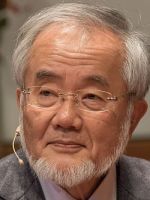
Yoshinori Ohsumi
The Nobel Prize in Physiology or Medicine 2016
Award: “for his discoveries of mechanisms for autophagy.”
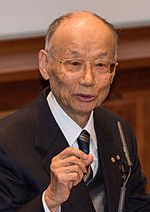
Satoshi Omura
The Nobel Prize in Physiology or Medicine 2015
Nobel co-recipient: William C. Campbell, Tu Youyou
Award: “for their discoveries concerning a novel therapy against infections caused by roundworm parasites.”
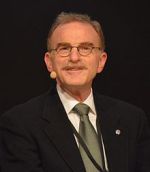
Randy Schekman
The Nobel Prize in Physiology or Medicine 2013
Nobel co-recipients: James E. Rothman, Thomas C. Südhof
Award: “for their discoveries of machinery regulating vesicle traffic, a major transport system in our cells.”
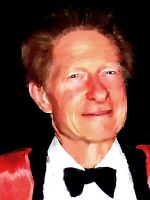
courtesy to cameraman
Sien Yi Tan.
Painting Tim Tompkins –
PaintHistory,com
Sir John B. Gurdon Kt DPhil DSc FRS
The Nobel Prize in Physiology or Medicine 2012
Nobel co-recipient Shinya Yamanaka
Developmental Biologist. Mature cells can be reprogrammed to become pluripotent. Hobbies: Outdoor sports, mountaineering, travelling, but not theatre, music, reading.
At age15, damning school report: …he will not listen, but will insist in doing his work his own way…has ideas of becoming a Scientist…waste of time for him and teachers.
`Know Thyself
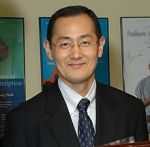
Shinya Yamanaka
The Nobel Prize in Physiology or Medicine 2012
Nobel co-recipient: Sir John B. Gurdon
Award: “for the discovery that mature cells can be reprogrammed to become pluripotent.”
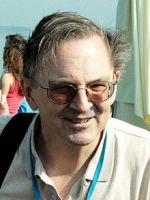
Jack Szostak
The Nobel Prize in Physiology or Medicine 2009
Nobel co-recipients: Elizabeth H. Blackburn, Carol W. Greider
Award: “for the discovery of how chromosomes are protected by telomeres and the enzyme telomerase.”
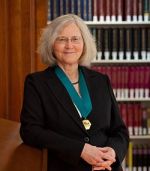
Elizabeth M. Blackburn
The Nobel Prize in Physiology or Medicine 2009
Nobel co-recipients: Carol W. Greider, Jack W. Szostak
Award: “for the discovery of how chromosomes are protected by telomeres and the enzyme telomerase”
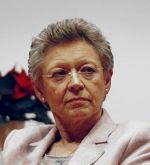
Francoise Barre-Sinoussi
The Nobel Prize in Physiology or Medicine 2008
Nobel co-recipients: Harald zur Hausen, Luc Montagnier
Award: “for their discovery of human immunodeficiency virus.”
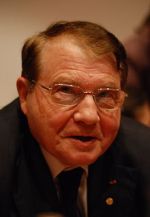
Luc Montagnier
The Nobel Prize in Physiology or Medicine 2008
Nobel co-recipients: Harald zur Hausen, Françoise Barré-Sinouss
Prize: “for their discovery of human immunodeficiency virus.”
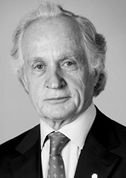
Foundation
Mario R. Capecchi Ph.D. 
The Nobel Prize in Physiology or Medicine 2007
Nobel co-recipients: Sir Martin J. Evans and Oliver Smithies
National Medal of Science – Biological Sciences 2001
Molecular Geneticist. Introduced specific gene modifications in mice by using embryonic stem cells. Gene Targeting, Homeobox Genes, Development, Behavior.
Mother incarcerated as political prisoner, Germany. “At age 4½, I set off on my own, living in streets, orphanages; joining gangs of homeless children; generally hungry. Vivid recollections, brutal beyond description.”
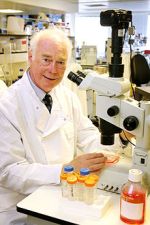
Foundation
Martin J. Evans
The Nobel Prize in Physiology or Medicine 2007
Nobel co-recipients: Mario R. Capecchi, Oliver Smithies
Prize: “for their discoveries of principles for introducing specific gene modifications in mice by the use of embryonic stem cells.”
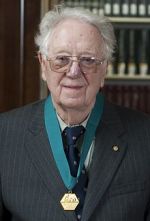
Oliver Smithies
The Nobel Prize in Physiology or Medicine 2007
Nobel co-recipients: Mario R. Capecchi, Sir Martin J. Evans
Award: “for their discoveries of principles for introducing specific gene modifications in mice by the use of embryonic stem cells.”
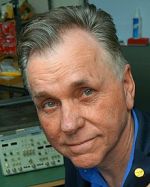
Barry J. Marshall
The Nobel Prize in Physiology or Medicine 2005
Co Nobelists: J. Robin Warren
Award: “for their discovery of the bacterium Helicobacter pylori and its role in gastritis and peptic ulcer disease.”
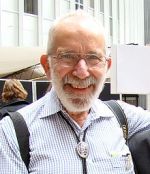
Robin Warren
The Nobel Prize in Physiology or Medicine 2005
Nobel co-recipient: Barry J. Marshall
Award: “for their discovery of the bacterium Helicobacter pylori and its role in gastritis and peptic ulcer disease.”
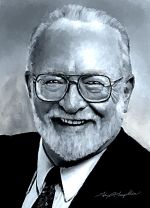
– PaintHistory.com
Paul C. Lauterbur Ph.D.
The Nobel Prize in Physiology or Medicine 2003
Nobel Co-recipient Sir Peter Mansfield
The President’s National Medal of Science – Physical Sciences 1987
The National Medal of Technology and Innovation 1988
Chemist. Magnetic resonance imaging.
“Every great idea in history has the red stamp of rejection on its face. If you scratch any innovation’s surface, you’ll find the scars: they’ve been roughed up and thrashed around by the masses and the leading minds before they made it into your life.”
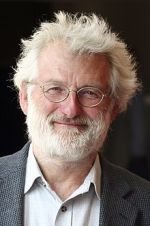
John Sulston
The Nobel Prize in Physiology or Medicine 2002
Nobel co-recipients: Sydney Brenner, H. Robert Horvitz
Award: “for their discoveries concerning genetic regulation of organ development and programmed cell death’.”
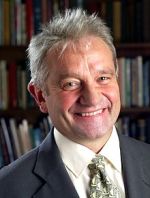
Sir Paul Nurse
The Nobel Prize in Physiology or Medicine 2001
Nobel co-recipients: Leland Hartwell, Tim Hunt
Award: “for their discoveries of key regulators of the cell cycle.”
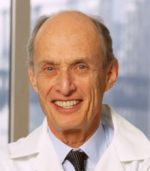
Paul Greengard
The Nobel Prize in Physiology or Medicine 2000
Nobel co-recipients: Arvid Carlsson, Eric Kandel
Prize: “for their discoveries concerning signal transduction in the nervous system.”
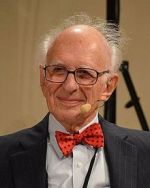
Eric Kandel
The Nobel Prize in Physiology or Medicine 2000
Co Nobelists: Arvid Carlsson, Paul Greengard
Award: “for their discoveries concerning signal transduction in the nervous system.”
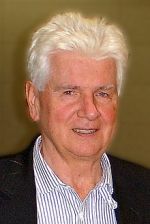
Günter Blobel
The Nobel Prize in Physiology or Medicine 1999
Award: “for the discovery that proteins have intrinsic signals that govern their transport and localization in the cell.”
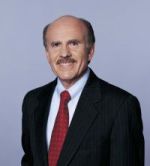
Louis J. Ignarro Ph.D.
The Nobel Prize in Physiology or Medicine 1998
Nobel co-recipients: Robert F. Furchgott and Ferid Murad
Molecular & Medical Pharmacologist
While testifying before Congress in 2000, Ignarro remarked: “Only in America could the son of an uneducated carpenter receive the Nobel Prize in Medicine.”
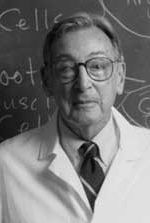
Downstate Med Ctr. Wiki.
Robert F. Furchgott
The Nobel Prize in Physiology or Medicine 1998
Nobel co-recipients: Louis J. Ignarro, Ferid Murad
Prize: “for their discoveries concerning nitric oxide as a signalling molecule in the cardiovascular system.”
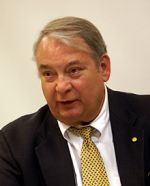
Ferid Murad
The Nobel Prize in Physiology or Medicine 1998
Nobel co-recipients: Robert F. Furchgott, Louis J. Ignarro
Prize: “for their discoveries concerning nitric oxide as a signalling molecule in the cardiovascular system.”
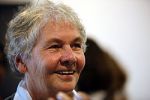
Christiane Nusslein-Volhard
The Nobel Prize in Physiology or Medicine 1995
Nobel co-recipients: Edward B. Lewis, Eric F. Wieschaus
Award: “for their discoveries concerning the genetic control of early embryonic development.”
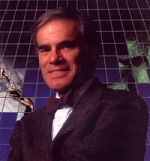
Martin Rodbell
The Nobel Prize in Physiology or Medicine 1994
Nobel co-recipient: Alfred G. Gilman
Award: “for their discovery of G-proteins and the role of these proteins in signal transduction in cells.”
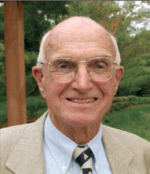
Joseph E. Murray
The Nobel Prize in Physiology or Medicine 1990
Nobel co-recipient: E. Donnall Thomas
“for their discoveries concerning organ and cell transplantation in the treatment of human disease.”
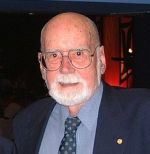
Donnall Thomas
The Nobel Prize in Physiology or Medicine 1990
Nobel co-recipient: Joseph E. Murray
Award: “for their discoveries concerning organ and cell transplantation in the treatment of human disease.”
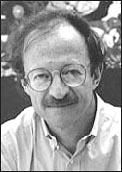
Harold Varmus M.D.
Nobel Prize in Physiology or Medicine 1989
Nobel co-recipien: J. Michael Bishop
National Medal of Science – Biological Sciences 2001
Physician, Scientist, Litterateur. Cellular origin of retroviral oncogenes. Co-founder, Public Library of Science Journals. Initiated doubling NIH budget. Interests: cycling, rowing.
‘Unflappable Varmus’
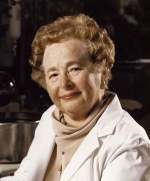
Gertrude B. Elion M.S.[Chemistry]
The Nobel Prize in Physiology or Medicine 1988
Co-Nobelists: Sir James W. Black, George H. Hitchings
National Medal of Science – Chemistry 1991
Chemist, Pharmacologist. Discovered principles for drug treatment; developed drugs – anticancer, immunosuppressive, antiviral, antibacterial, anti-gout, anti-malarial. Purines.
“I was a child with an insatiable thirst for knowledge. My beloved grandfather died of cancer when I was 15. I was highly motivated to discover a cure for this terrible disease”.
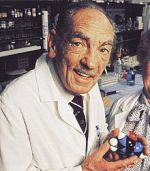
George H. Hitchings
The Nobel Prize in Physiology or Medicine 1988
Co Nobelists Sir James W. Black, Gertrude B. Elion
Chemist, Pharmacologist. Discovered principles for drug treatment; developed drugs – anticancer, immunosuppressive, antiviral, antibacterial, anti-gout, anti-malarial. Purines. 6-mercaptopurine, Imuran, allopurinol, pyramethamine, trimethoprim, Acyclovir.
“My greatest satisfaction … save lives, relieve suffering. At baptism, my father dedicated my life to service of mankind. Very proud … able to fulfill his hopes.”
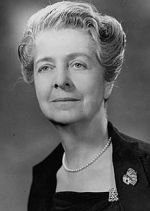
Rita Levi-Montalcini
The Nobel Prize in Physiology or Medicine 1986
Nobel co-recipients: Stanley Cohen
Prize: “for their discoveries of growth factors.”
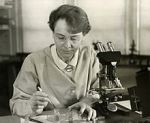
Barbara McClintock Ph.D.
The Nobel Prize in Physiology or Medicine 1983
The President’s National Medal of Science – Biological Sciences 1970
Cytogeneticist. Mobile genetic elements, 1948. Nobel after 35 years. Skilled experimentalist, master cytological detail interpreter, brilliant theoretician. Solo labor, no technical help. Friendly fellow scientists. Discriminated as woman.
“Tacit assumptions – substance of dogma – served as barrier to effective communication. My understanding of phenomenon was too radical for time.”
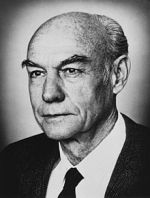
Roger Wolcott Sperry Ph.D. [Zoology], M.A. [Psychology]
The Nobel Prize in Physiology or Medicine 1981
Nobel co-recipients David H. Hubel, Torsten N. Wiesel
The President’s National Medal of Science – Biological Sciences 1989
Psychologist, Philosopher, Zoologist, Neuroanatomist. Functional specialization of cerebral hemispheres. Split-brain studies. Duality of consciousness. Mind and consciousness. High ethical standards. Authorship generosity.
Ralph Gerard, “I know of nobody else who has disposed of cherished ideas of his doctoral and postdoctoral sponsors, at that time the acknowledged leaders in their fields.”
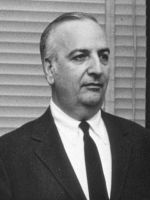
Baruj Benacerraf, M.D.
The Nobel Prize in Physiology or Medicine 1980
Nobel co-recipients: Jean Dausset, George D. Snell
National Medal of Science – Biological Sciences 1990
Physician, Scientist – Immunologist, teacher, remarkable leader. Discovered genetically determined structures on the cell surface that regulate immunological reactions.
“Baruj did not always get on well with those in authority, often because he felt he could do their jobs so much better than they did …”
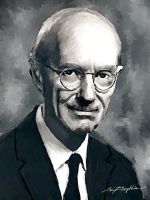
Painting Tim Tompkins PaintHistory.com
George Davis Snell D.Sc.
The Nobel Prize in Physiology or Medicine 1980
Nobel co-recipients: Baruj Benacerraf, Jean Dausset
Geneticist, Transplantation Immunologist. Genetically determined structures on cell surface that regulate immunological reactions, the major histocompatibility complex, HLA. Thesis work on linkage in mice largely determined future work. Interest: social evolution.
“In examining histocompatibility genetics as one of several potential new undertakings, I thought I saw possibilities for new openings.”
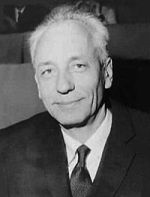
Jean Dausset
The Nobel Prize in Physiology or Medicine 1980
Nobel co-recipients: Baruj Benacerraf, George D. Snell
Award: “for their discoveries concerning genetically determined structures on the cell surface that regulate immunological reactions.”
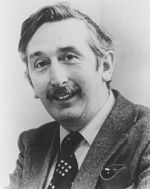
Godfrey N. Hounsfield
The Nobel Prize in Physiology or Medicine 1979
Co Nobelists Allan M. Cormack
Award: “for the development of computer assisted tomography.”
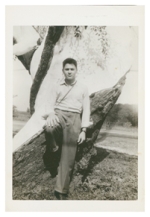
Daniel M. Nathans M.D.
The Nobel Prize in Physiology or Medicine 1978
Nobel co-recipients Werner Arber, Hamilton O. Smith
National Medal of Science – Biological Sciences 1993
Physician, Molecular Biologist – Genetics. Restriction enzymes and their application to molecular genetics. Groundwork for human genome project, drug insulin. Able administrator – high signal-to-noise ratio.
“Valuable internship year in medicine with masterful clinician Robert Loeb; The glimpses of human strength and frailty that a physician sees are still with me.”
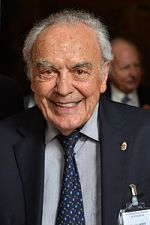
Werner Alber
The Nobel Prize in Physiology or Medicine 1978
Award: “for the discovery of restriction enzymes and their application to problems of molecular genetics.”
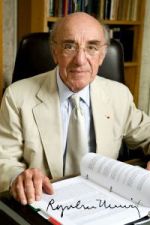
Roger Guillemin M.D., Ph.D.
The Nobel Prize in Physiology or Medicine 1977
Nobel co-recipients Andrew V. Schally, Rosalyn Yalow
Physician, Physiologist, Neuroendocrinologist. Peptide hormone production of brain. Visual Artist.
Alfred Nobel chose to associate Literature and Science in his legacy. The mission, role and responsibility to society of a scientist and an artist are the same.
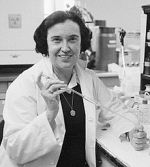
Rosalyn Yalow
The Nobel Prize in Physiology or Medicine 1977
Nobel co-recipients: Roger Guillemin, Andrew V. Schally
Award: “for the development of radioimmunoassays of peptide hormones.”
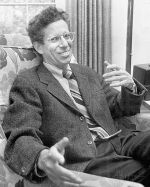
Howard M. Temin Ph.D.
The Nobel Prize in Physiology or Medicine 1975
Nobel Co-recipients David Baltimore, Renato Dulbecco
National Medal of Science – Biological Sciences 1992
Virologist. Interaction between tumor viruses and genetic material of cell. DNA provirus and RNA-directed DNA synthesis. Reverse Transcriptase. Intellectually courageous. Civic minded.
How fortunate to live in a country at a time and in a social class that has enabled us to realize our potential. Not been possible for many.
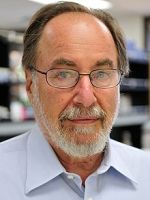
David Baltimore Ph.D.
The Nobel Prize in Physiology or Medicine 1975
Co-Nobelists Renato Dulbecco, Howard M. Temin
Award: “for their discoveries concerning the interaction between tumour viruses and the genetic material of the cell.”
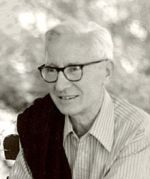
Nikolaas Tinbergen, Ph.D.
The Nobel Prize in Physiology or Medicine 1973
Co-nobelists Karl von Frisch, Konrad Lorenz
Biologist – Ornithologist. Discovered ‘organization and elicitation of individual and social behavior patterns’. Sticklebacks fish. Bee wolf, a digger wasp, Philanthus Triangulum. Adventurous. Elder brother Jan Tinbergen is Economics Nobelist, 1969, the first year the Economics prize was awarded. Both awarded at age 66yrs.
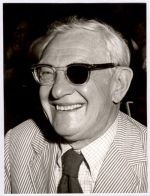
Julius Axelrod Ph.D.
The Nobel Prize in Physiology or Medicine 1970
Co-Nobelists Sir Bernard Katz, Ulf von Euler1
Pharmacologist. Neurophysiologist. Mechanism for storage, release, inactivation of humoral transmitters in nerve endings. Discovered drug metabolic pathways: hydroxylation, demethylation, deamination, conjugation. Led to liver’s microsomal drug-metabolizing enzymes discovery. Pheochromocytoma. Carboxylmethyl transferase. Melatonin.
Ideal mentor. Infectious exhilaration in discovery. Research was genuine fun. Students came out of lab with same attitude.
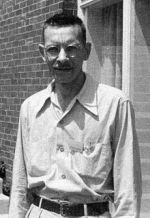
Alfred Day Hershey Ph.D.
The Nobel Prize in Physiology or Medicine 1969
Co-Nobelists Max Delbrück, Salvador E. Luria
Geneticist, Virologist. Viruses’ replication mechanism, genetic structure. “Nothing more satisfying than developing method; ideas come and go, methods last.” Superb editor. Remembered: chemical basis of heredity.
Nobel Awards bring happiness not only to recipients, colleagues, friends, but to strangers! Humans love ceremonies that honor truth, justice. Thank God for sentiment.
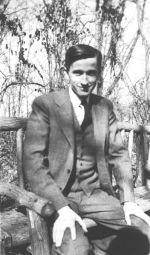
Max Delbrück M.D.
The Nobel Prize in Physiology or Medicine 1969
Co-Nobelists Alfred D. Hershey, Salvador E. Luria
Award: “for their discoveries concerning the replication mechanism and the genetic structure of viruses”
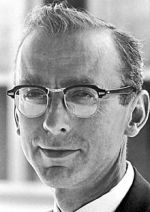
Robert W. Holley, Ph.D.
The Nobel Prize in Physiology or Medicine 1968
Nobel co-recipients: H. Gobind Khorana, Marshall W. Nirenberg
Organic Chemist. ‘Interpreted genetic code and its function in protein synthesis’ First chemical synthesis of penicillin. Research: amino acids, peptides, protein biosynthesis. Discovered and isolated tRNA [transfer RNA] – alanine transfer RNA.
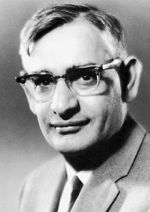
H. Gobind Khorana, Ph.D.
The Nobel Prize in Physiology or Medicine 1968
Co-Nobelists: Robert W. Holley, Marshall W. Nirenberg
National Medal of Sciences – Biological Sciences 1978
Organic Chemist, Biochemist. ‘Genetic code interpretation, function in protein synthesis. Pioneered synthesizing biologically active gene, determine codon triplets’ nucleotides order. Unraveled genetic code, how nucleic acids form proteins. Pioneered genetic engineering. Multidisciplinary work.
“Wife brought sense of purpose. In foreign country, I felt out of place everywhere, at home nowhere.”
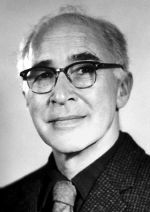
George Wald Ph.D.
The Nobel Prize in Physiology or Medicine 1967
Co-Nobalists Ragnar Granit, Haldan Hartline
Zoologist. Visual physiologist. Visual pigment molecules are protein bound to derivative of vitamin A. Excellent teacher. Political actions part of biologist: one who is concerned with life.
“Selig Hecht was great teacher, physiologist. After leaving his laboratory, I felt his presence. What I did, said, wrote, was addressed to him.”
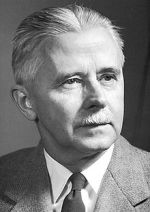
Haldan K. Hartline M.D.
The Nobel Prize in Physiology or Medicine 1967
Nobel co-recipients Ragnar Granit, George Wald
Physician, Biophysicist. Physiological and chemical visual processes in eye.
“Vision itself is a dynamic process. There is little in the world that stands still, at least not as imaged in our retinas, for our eyes are always moving. The visual system is almost exclusively organized to detect change and motion.”
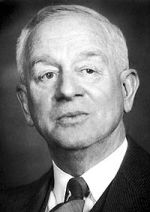
Peyton Rous M.D.
The Nobel Prize in Physiology or Medicine 1966
Co-Nobelist Charles B. Huggins
Physician, Biophysicist. Physiological and chemical visual processes in eye.
Physician, Pathologist, Scientist. Tumor-inducing Rous Sarcoma Virus, tumor filtrate transplantability. Nobel 50 yrs after discovery. Blood transfusion, world’s first blood bank, Rous-Turner solution. Accurate editing, content, style. Experiments: extreme clarity. Equanimity, warmth. Many old are young to life.
“Uneducated men can be as great-hearted, lovable as those who know much.”
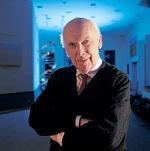
James D. Watson
The Nobel Prize in Physiology or Medicine 1962
Co-Nobelists Francis Crick, Maurice Wilkins
The President’s National Medal of Sciences – Biological Sciences 1997
Zoologist. ‘Discovered molecular structure of nucleic acids and its significance for information transfer in living material.’ Very generous with subordinates regarding authorship of articles.
“Good science is difficult. We must believe strongly in our ideas.”
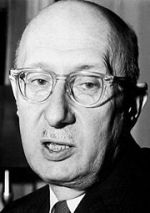
Georg von Békésy Ph.D. [Physics]
The Nobel Prize in Physiology or Medicine 1961
Physicist, Communication engineer. Psychophysiology of hearing. Physical mechanism of stimulation within cochlea, a frequency analyzer. Accidental selection of science field. Technically skillful, elegant experimental design. He nuisance to autopsy room, mechanical workshops.
“Found inner ear beautiful under stereoscopic microscope. It was pleasure of beauty that made me stick to ear.”.
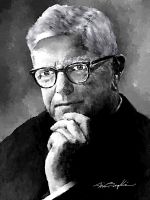
Denver. Wiki. Painting
Tim Tompkins –
PaintHistory.com i
Sir Frank Macfarlane Burnet, M.D.
The Nobel Prize in Physiology or Medicine 1960
Co-Nobelist Peter Medawar
Physician – Pathologist, Immunologist, Virologist, Bacteriologist. Discovered acquired immunological tolerance – important for transplantation. Cultivated viruses on chorioallantoic membrane, determined inoculated material concentration. Red blood cells haemagglutination by viruses. Virus complexity. Neuropathogenicity transfer. Virus infections prevention. Typhoid fever agglutinin reactions. Isolated influenza A virus strain. Vibrio cholera receptor-destroying enzyme. Excellent teacher.
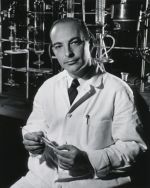
Arthur Kornberg M.D.
The Nobel Prize in Physiology or Medicine 1959
Nobel co-recipient Servero Ochoa
National Medal of Science – Biological Sciences 1979
Physician, Scientist. Discovered mechanisms in biological synthesis of RNA and DNA – basis of discovery of recombinant DNA which helped ignite biotechnology revolution. Founder, DNAX Institute.
“With more scientists struggling for grants in an era of tight budgets, nobody is going to propose doing anything that is bold or creative.”
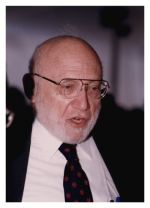
Joshua Lederberg Ph.D.
The Nobel Prize in Physiology or Medicine 1958
Nobel co-recipients George Beadle, Edward Tatum
National Medal of Science – Biological Sciences 1989
Geneticist. Genetic recombination and organization of genetic material of bacteria. Artificial intelligence. NASA seeking life on Mars. Fastest rate possible for growth of bacterial cell and why. Nobel Prize at age 33
At Nobel Banquet, “Pride is humbled as humility is exalted in the dignity and splendor of this occasion.”
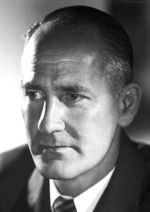
George Wells Beadle Ph.D.
The Nobel Prize in Physiology or Medicine 1958
Co-Nobelists Edward Tatum, Joshua Lederberg
Biochemical Geneticist. Discovered that genes act by regulating definite chemical events. Brought era of classical genetics to a close and launched molecular age.
“It was a time when one went to work in the morning wondering what new excitement the day would bring.” – Colleague and biographer Norman H. Horowitz.
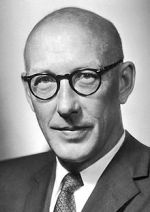
Edward L. Tatum Ph.D.
The Nobel Prize in Physiology or Medicine 1958
Co-Nobelists George Beadle, Joshua Lederberg
Geneticist, Microbiologist, Biochemist. Genes act by regulating definite chemical events. Changed from Drosophila to Neurospora. Nurtured younger scientists. Generous spirit, scientific vision.
“Ability to balance critical scientific objectivity, personal ambition, interdependence on others-some scientists take lifetime to learn-was ingrained in Tatum from beginning.” – Mentee, Biographer Joshua Lederberg.
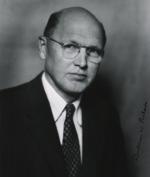
Dickinson W. Richards Ph.D.
The Nobel Prize in Physiology or Medicine 1956
Co-Nobelists André F. Cournand, Werner Forssmann
Physician, gentle clinician, cardiovascular physiologist. “Discoveries concerning heart catheterization, pathological changes in circulatory system.” Diagnosing congenital heart diseases; chronic cardiac, pulmonary diseases; traumatic shock.
“Man’s potentiality, or these days his survival, will depend on his conscience, more specifically, ability of leaders and followers to change character, into more merciful beings.”
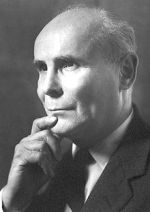
André F. Cournand M.D.
The Nobel Prize in Physiology or Medicine 1956
Co-nobelists Werner Forssmann, Dickinson W. Richards
Physician. Discovered heart catheterization. Used contrast material to show in X-rays. Studied pulmonary circulation – flow, pressure and volume.
“…happiness stems from the appreciation of a task, from what is asked of man and not from the satisfaction of his material appetites.”
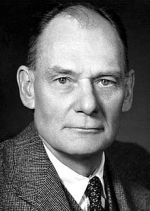
John Franklin Enders Ph.D.
The Nobel Prize in Physiology or Medicine 1954
Co-Nobelists Thomas H. Weller, Frederick C. Robbins
Virologist, Bacteriologist. Discovered ability of poliomyelitis viruses to grow in tissue culture. Cytopathic effect. Interferon, Viral Oncogenesis. Tissue culture enabled identifying hundreds of viruses, vaccine development.
Memorial to Advisor Zinsser: animated spontaneous conversation – literature, politics. Voltaire seemed around corner; Laurence Sterne upon the stair. Laboratory became way of life.
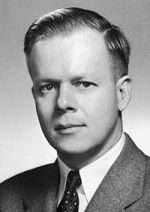
Thomas H. Weller M.D., M.S.
The Nobel Prize in Physiology or Medicine 1954
Co- Nobelists John F. Enders, Frederick C. Robbins
Physician, Virologist, Parasitologist. Discovered ability of poliomyelitis viruses to grow in tissue culture. Isolated many viruses, parasites; developed diagnostic tests. Isolated German measles in son. Tissue culture enabled identifying hundreds of viruses, vaccine development.
Nobel Committee Sven Gard: tissue cultures will do for virology what Koch accomplished by culture media.
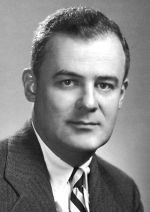
Frederick C. Robbins M.D.
The Nobel Prize in Physiology or Medicine 1954
Co-Nobelists John F. Enders, Thomas H. Weller
Physician, Virologist. Discovered ability of poliomyelitis viruses to grow in tissue culture. Investigated infectious hepatitis, typhus fever, Q fever, mumps, herpes simplex and vaccinia. Supervised diagnostic virus laboratory. Educator, Science Statesperson. Interest: International health. Tissue culture enabled identifying hundreds of viruses, vaccine development.
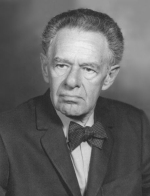
Fritz A. Lipmann M.D., Ph.D.
The Nobel Prize in Physiology or Medicine 1953
Co-Nobelist Hans Krebs
National Medal of Science – Biological Sciences 1966
Physician, Biochemist. Discovered co-enzyme A, its importance for intermediary metabolism. Identified serine phosphate as constituent of phosphoproteins which contain phosphate. CMP represents metabolically active carbamyl donor.
Liljestrand, Science Academy: …Regarding fundamental discoveries laymen ask for immediate practical application. Counter question of Benjamin Franklin: Of what use is a new-born baby?
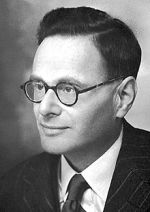
Hans Krebs M.D
The Nobel Prize in Physiology or Medicine 1953
Co-Nobelists Fritz Lipmann
Physician, Biochemist. Discovered citric acid cycle in which nutrients are converted to chemical energy molecules which are converted to ATP used in chemical processes. Krebs-Henseleit cycle.
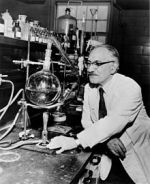
Selman A. Waksman
The Nobel Prize in Physiology or Medicine 1952
Ukrainian-born American Microbiologist, Biochemist. Isolated several antibiotics including Streptomycin for Tuberculosis and Neomycin. Proceeds earned from patents funded Waksman Institute of Microbiology and Waksman Foundation for Microbiology.
“The Lord hath created medicines out of the earth; and he that is wise will not abhor them. Ecclesiasticus, XXXVIII , 4”
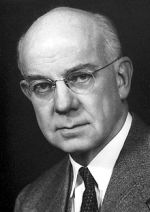
Edward Calvin Kendall Ph.D.
The Nobel Prize in Physiology or Medicine 1950
Nobel Co-recipients Tadeus Reichstein, Phillip S.Hench
Chemist. Adrenal cortex hormones including cortisone: structure, biological effects. Thyroid hormone thyroxine: isolated. Glutathione: crystallized, established structure.
What physiologic processes are modified by cortisone and how this influence is exerted are matters still locked within this hormone. Said Shakespeare’s soothsayer, “In Nature’s infinite book of secrecy a little I can read.”
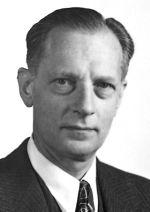
Carl F. Cori M.D
The Nobel Prize in Physiology or Medicine 1947
Co-nobelists Gerty Cori, Bernardo Houssay
Award: “for their discovery of the course of the catalytic conversion of glycogen
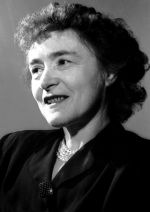
Gerti T. Cori M.D.
The Nobel Prize in Physiology or Medicine 1947
Co-nobelists Carl Cori, Bernardo Houssay
Award: “for their discovery of the course of the catalytic conversion of glycogen
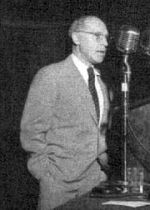
Hermann Joseph Muller Ph.D.
The Nobel Prize in Physiology or Medicine 1946
Geneticist. Production of mutations by X-ray irradiation.
“Do you consider it possible to discover a cosmic ray which – applied to humanity – would cause a mutation making it peace-loving and suited to happy relationships? You’ll be awarded another Medicine and many Peace Nobels!” – Sigurd Curman, Banquet Speech
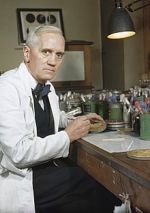
Sir Alexander Fleming M.B., B.S.
The Nobel Prize in Physiology or Medicine 1945
Co-Nobelists: Ernst B. Chain, Sir Howard Florey
Physician – Bacteriologist, Immunologist. While researching Influenza virus, made ground breaking discovery: penicillin, by not neglecting chance observation – mould contaminating culture plate. WWI caused interest in Antiseptics. WWII, production cost was immaterial. Destiny.
Lone worker gets idea; details developed by team, but prime idea is due to enterprise, thought, perception of an individual.
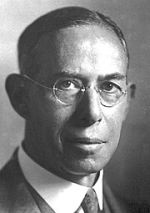
Joseph Erlanger
The Nobel Prize in Physiology or Medicine 1944
Nobel co-recipient Herbert S. Gasser
Physician, Physiologist. Single nerve fibers highly differentiated functions. Cathode-ray oscillograph study of nerve action potentials. Circulatory system electrophysiology. Recording sphygmomanometer. Auriculo-ventricular bundle functions. Pulse pressure influence on kidney secretion, orthostatic albuminuria. Sound production in arteries. Metabolism with shortened intestines. Traumatic shock.
Career “fraught with series of fortunate circumstances, fortunate decisions.”
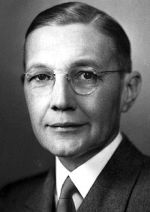
Herbert S. Gasser M.D.
The Nobel Prize in Physiology or Medicine 1944
Co-Nobelist Joseph Erlanger
Physician, Electrophysiologist, Pharmacologist. Discovered differentiated functions of single nerve fibers. Two types of nerve fibers with different thicknesses; thicker fibers convey nerve impulses fast.
Two times for working on a problem – before anyone has thought of it and after everyone else has left it – result: innovator or finalist.
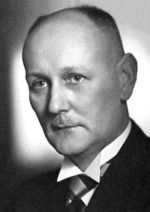
Gerhard Domagk
The Nobel Prize in Physiology or Medicine 1939
Award: “for the discovery of the antibacterial effects of prontosil.”
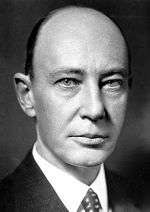
George R. Minot M.D.
The Nobel Prize in Physiology or Medicine 1934
Co-nobelists George H. Whipple, William P. Murphy
Award: “for the discovery of the antibacterial effects of prontosil.”
Ukrainian Zoologist. Theory of cellular immunity. Father of Natural immunity. Research: Comparative embryology, Phagocytosis, Anthrax, Rabies.
Weak eyesight, heart troubles, difficulties in University lead to pessimism. Twice attempted suicide. Discovery of phagocytosis completely changed his outlook on life; abandoned his pessimistic philosophy and determined to find further proof of hypothesis.
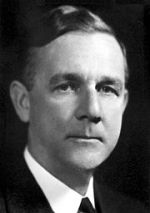
George H. Whipple M.D.
The Nobel Prize in Physiology or Medicine 1934
Co-Nobalists George R. Minot, William P. Murphy
Physician; Pathologist. Pernicious anemia liver therapy. Whipple Disease. Intestinal parasites. Blackwater fever. WWII, Chloroform anesthesia induced liver necrosis. Liver regeneration. Tuberculosis. Pancreatitis. Used Nobelists Joliot Curie’s, Fermi’s, E.O. Lawrence’s radioactive isotopes; discovered iron metabolism; protein metabolism, distribution, functions. Bile constituents. Red cell stroma.
Gentle. Quiet. Wanted to be remembered as teacher.
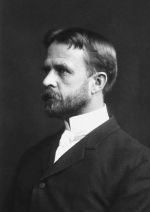
Thomas H. Morgan Ph.D.
The Nobel Prize in Physiology or Medicine 1933
Zoologist, Geneticist. Chromosome role in heredity, sex determination. Drosophila. Genes stored in chromosomes in nuclei. Epigenetics. Combination rule. Limited number of combination groups. Crossing-over rule. Linear arrangement of genes in chromosomes.
Didn’t attend Nobel award ceremony, because in Caltech, busy establishing new physiology group and with future of biochemistry, genetics.
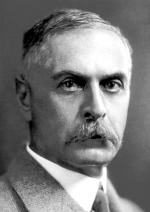
Karl Landsteiner
The Nobel Prize in Physiology or Medicine 1930
Physician – Anatomic Pathologist, Father of Immunology. ABO Blood Groups, Rh Typing. Paroxysmal Haemoglobinuria. Polio. Spirochaetes. Chemistry into service of serology. Meticulous observation, description, understanding in many fields.
Rigorously demanding of himself. Energetic. By nature somewhat pessimistic, preferred to live away from people.
Characteristic of him – died pipette in hand.
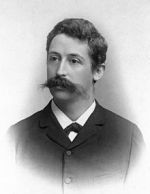
Christiaan M. Eijkman
The Nobel Prize in Physiology or Medicine 1929
Nobel co-recipient: Sir Frederick Hopkins
Award: “for his discovery of the antineuritic vitamin.”
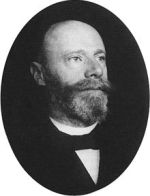
Willem Einthoven, Physician
The Nobel Prize in Physiology or Medicine 1924
Physician, Physiologist. Discovered electrocardiogram [EKG/ECG] mechanism. It was known that heart generates weak electrical current varying in health, heart disease. Invented galvanometer recording these currents. Named electrical waves P, Q, R, S, T. [P petite; next letters in alphabet]. Interests: Physics, Acoustics, Asthma, Optics, Physical activity. Great concentration. Generous, Kind.
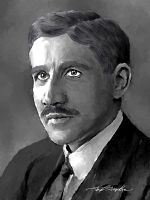
PaintHistory.com
Otto F. Meyerof
The Nobel Prize in Physiology or Medicine 1922
Nobel Co-recipient Archibald V. Hill
Physician. Energy conversions in muscle. Fine experimenter, Physiological Chemist.
Science should know no national barriers and prejudices. Scientists should pour oil smoothing real wisdom and rational self-reflection in agitated waves of national passions of people. This ethos of objectivity causes mutual understanding among nations. Consider all Nobel Prizes, ‘Peace’ Prizes.
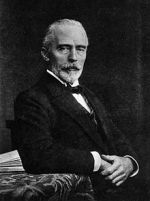
PaintHistory.com
Emil Theodor Kocher Physician
The Nobel Prize in Physiology or Medicine 1909
Physician, Surgeon. Award: “Thyroid physiology, pathology, surgery.” Lister’s principles. Relatively bloodless surgical field. “Kocher incision”. Recurrent laryngeal nerve damage: hoarseness; tetany, hypoparathyroidism. Myxedema: thyroid transplantation, tissue extracts injection, oral therapy.
Brain: damage, increased intra-cranial pressure, trepanation. Abdominal surgery. “Kocher mobilization”. Orthopedics: hereditary malformations, fracture. Hernia. Incision selection. Epilepsy. Osteomyelitis. Statistics.
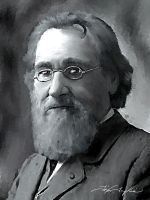
Tim Tompkins PaintHistory.com
Ilya Mechnikov Ph.D.
The Nobel Prize in Physiology or Medicine 1908
Nobel Co-recipient Paul Ehrlich
Ukrainian Zoologist. Theory of cellular immunity. Father of Natural immunity. Research: Comparative embryology, Phagocytosis, Anthrax, Rabies.
Weak eyesight, heart troubles, difficulties in University lead to pessimism. Twice attempted suicide. Discovery of phagocytosis completely changed his outlook on life; abandoned his pessimistic philosophy and determined to find further proof of hypothesis.
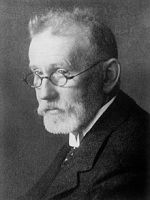
Paul Ehrlich
The Nobel Prize in Physiology or Medicine 1908
Nobel co-recipient Ilya Mechnikov
Physician, Scientist. Immunologist, Hematology pioneer. Founded Chemotherapy. Classified stains. Stained tissues, blood cell granules, tubercle bacillus. Standardized sera. Idea: Drugs’ chemical constitution related to action, affinity for cells against which directed.
“Schwann established cell as biological unit. Concept of cell is axis around which whole modern science of life revolves”
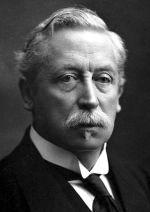
Christiaan M. Eijkman
The Nobel Prize in Physiology or Medicine 1929
Nobel co-recipient: Sir Frederick Hopkins
Award: “for his discovery of the antineuritic vitamin.”
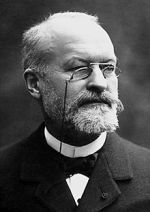
Alphonse Laveran Physician
The Nobel Prize in Physiology or Medicine 1907
Nobel co-recipient: Sir Frederick Hopkins
Physician. “protozoa cause diseases.” Malarial parasite discovery received with skepticism. Sleeping sickness. Trypanosomes in different animals, countries. 1914-1918 concern: troops’ health.
“After vain attempt to detect parasite in air, water, soil; cultivate in varied media, I became convinced: microbe was already present outside human body as parasite, probably of mosquitoes.”
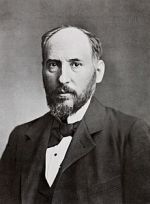
Santiago Cajal Doctor of Medicine, Ph.D.
The Nobel Prize in Physiology or Medicine 1906
Co-nobelist: Camillo Golgi
Physician, Anatomist, Pathologist, Artist. Discovered nervous system structure. Stained nerve cells with silver nitrate. Proved nerve cell’s independence that impulse travels from one cell to another by synapse. He used to be a barber’s and a shoemaker’s apprentice.
“Oh comforting solitude, how favorable thou art to original thought!
“Outstanding work results from immense zeal applied to great idea.” – Santiago Cajal
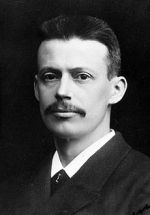
Niels Ryberg Finsen M.D.
The Nobel Prize in Physiology or Medicine 1903
Physician. Founder of phototherapy in dermatology. Discovered Lupus vulgaris treatment. Researched salt. Despite having Niemann-Pick disease he was strong willed and persevering.
Had early education in Denmark. Rector, “Niels is a very nice boy. His gifts are small but he’s devoid of energy.” Cause: fagging for older pupils. He was moved to a school in Iceland. He succeeded despite not knowing the language.
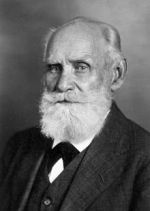
Ivan Pavlov
The Nobel Prize in Physiology or Medicine 1904
Award: “in recognition of his work on the physiology of digestion, through which knowledge on vital aspects of the subject has been transformed and enlarged.”
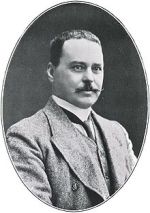
Ronald Ross, Physician
The Nobel Prize in Physiology or Medicine 1902
Physician. Mosquitoes’ malarial parasites life-cycle. Mathematical models for epidemiology. Malaria prevention. Contributed to pure, applied mathematics
‘My microscope was worn out, screws rusted with sweat from hands, forehead; remaining eye-piece cracked; invaluable oil-immersion lens remained good.’
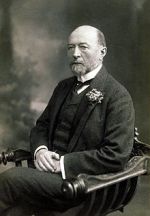
Emil Adolf von Behring, Physician
The Nobel Prize in Physiology or Medicine 1901
Physician. Serum therapy, especially against diphtheria. Tuberculosis.